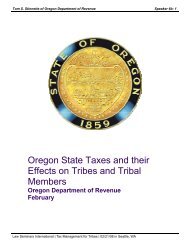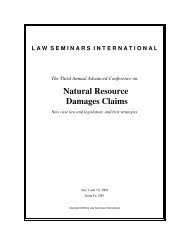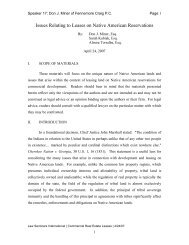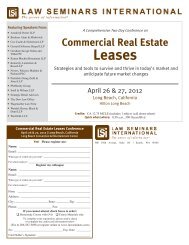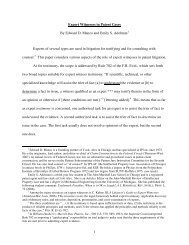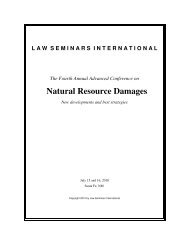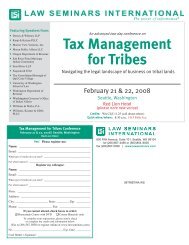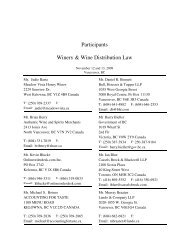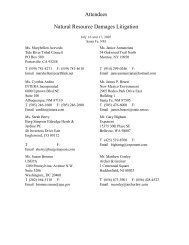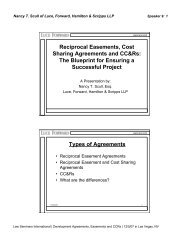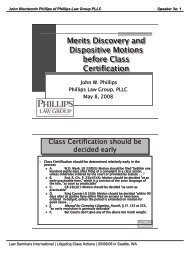LSI 2010 Real Estate Joint Ventures conference materials.pdf
LSI 2010 Real Estate Joint Ventures conference materials.pdf
LSI 2010 Real Estate Joint Ventures conference materials.pdf
Create successful ePaper yourself
Turn your PDF publications into a flip-book with our unique Google optimized e-Paper software.
John W. Hanley, Jr. of Davis Wright Tremaine LLP<br />
Tom Tierney of Seattle Housing Authority<br />
Gary A. Young of Polygon Northwest Company<br />
Hal Ferris of Spectrum Development Solutions LLC<br />
Large-scale Residential Development in Public-Private Partnership<br />
Page 7 of 8<br />
Speaker 13: 7<br />
Speaker 14: 7<br />
Speaker 15: 7<br />
Speaker 16: 7<br />
Presuming economic recovery and a return to “normal” real estate markets, the new<br />
community is being planned as significantly larger than today's Yesler community.<br />
Preliminary planning concepts suggest the following:<br />
• 3,000 to 5,000 residential units<br />
• 800,000 to 1.5 million square feet of medical office or institutional space<br />
• 25,000 to 100,000 square feet of retail space<br />
• 5 to 8 acres of parks and open space<br />
This dynamic mix allows Seattle Housing to reduce the demand for external funding for<br />
the project and to use proceeds from the sale of market-rate housing and commercial<br />
properties to fund additional low-income, workforce and affordable housing—not just at<br />
Yesler Terrace, but also elsewhere throughout Seattle.<br />
Yesler Terrace sits on the southern slope of First Hill, adjacent to downtown, Harborview<br />
Medical Center, the International District and Seattle University. Built in 1939, it is<br />
among the most diverse and one of the most economically challenged neighborhoods in<br />
Seattle. Many of its residents are families with children, seniors, people with disabilities,<br />
and immigrants who speak scores of different languages and come from a rich array of<br />
cultural experiences. Yesler Terrace residents earn less than 30 percent of the city's<br />
median income. Today, the deteriorating structures at Yesler Terrace and its underlying<br />
infrastructure are more than 70 years old, and need to be replaced.<br />
Yesler Terrace is envisioned as a connected community, linked to adjacent communities<br />
and downtown Seattle. As the economy rebounds and the markets return to “normal”<br />
levels over the next 10 to 15 years, Seattle will see a rebirth of Yesler Terrace as a place<br />
where people from across society can come together to enjoy cultural diversity, high<br />
quality homes and access to nearby parks, shops and offices. As it is completed, the new<br />
Yesler Terrace will provide opportunities for new life and prosperity for the<br />
neighborhood.<br />
The goals of a partnership at Yesler Terrace<br />
Although the Housing Authority has developed land for an aggregate of well over 4,000<br />
apartments and for-sale homes in its several large neighborhood redevelopments over the<br />
past 15 years, the agency recognizes the creation of a new urban neighborhood of 3,000-<br />
5,000 residential units on 30 acres adjacent to downtown offers risks and rewards that are<br />
significantly different from the earlier developments, for both the public and private<br />
sectors. Confounding the balance of risks and rewards right now are the current<br />
economic and market climates whose rebounds are a prerequisite for any successful<br />
Law Seminars International | <strong>Real</strong> <strong>Estate</strong> <strong>Joint</strong> <strong>Ventures</strong> and Funds | 02/08/10 in Seattle, WA<br />
7




